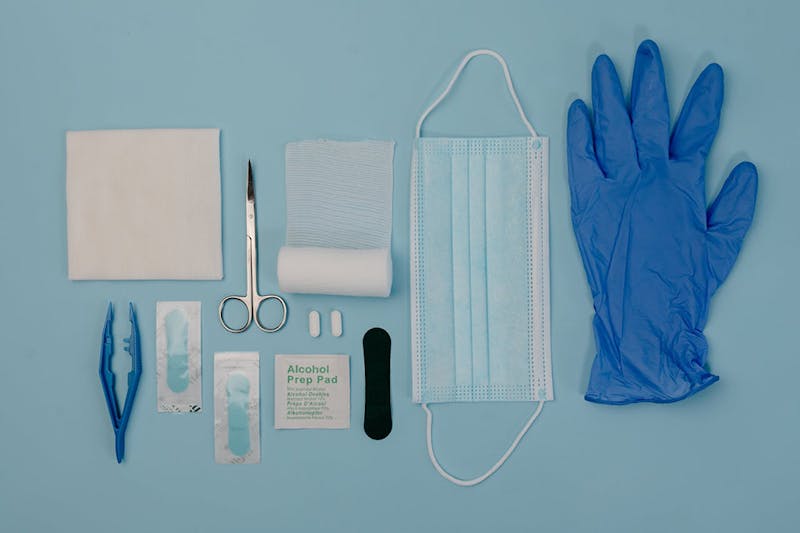
Pressure sores, commonly called bedsores or, more recently, pressure injuries, usually happen to people who are bedridden, mostly immobile, unconscious, in a coma, or possibly just unable to sense pain. If pressure sores are left untreated, they can result in serious, irreparable damage to your skin and muscles, which usually requires extensive surgery, hospital stays, and ongoing treatment of the affected areas.
We’ll explain what pressure sores are, what causes them, and most importantly, how to recognize the signs or symptoms of pressure sores before too much damage happens to your body. If you or a loved one has suffered due to pressure sores, our experienced team of Little Rock pressure injury lawyers is here to help.
What Is a Pressure Sore and What Can Cause Them?
A pressure sore is a type of ulcer or infection on areas of the skin that are under continuous pressure from lying in bed, sitting in a wheelchair, or other prolonged inactivity. These pressure injuries usually develop in elderly or largely immobile individuals who either can’t or don’t want to move around without assistance.
If you can’t move on your own, it’s important to have constant care, either from a family member or a licensed professional like a home nurse. With someone to help you move your body, you can relieve the pressure from injury-prone areas, which will greatly reduce the risk of developing pressure sores.
Pressure sores usually form on bony areas of your body where your skin is thinner, with less tissue to pad the area. These include:
- Elbows
- Hips
- Heels
- Back
- Back of head
- Buttocks
- Ankles
- Shoulders
If you or a loved one is confined to a wheelchair or in a hospital or nursing home, you’re likely to already have people on hand who can help you move your body. Make sure you move or are moved frequently and keep up with good hygiene and a healthy diet.
Signs and Symptoms of a Pressure Sore
According to 2016 data from the U.S. Department of Health and Human Services (DHHS), there were 836.9 pressure ulcer-related hospitalizations for every 100,000 adults aged 65 years and over. Knowing the signs and symptoms of pressure injuries can help our elderly and immobile loved ones from developing pressure sores, and understanding the differences in severity of these injuries is the first step.
There are four stages of pressure sores, from least severe to most severe, and these injuries can quickly be categorized at a more severe stage if left untreated or undiagnosed while at an earlier stage:
- Stage 1: The affected area of your skin looks red, won’t turn white when touched, and may be too warm or too cool. Those with darker skin may have a blue or purple shade to the areas, and anyone at this stage may complain that it itches, burns, or hurts.
- Stage 2: The affected area has an open sore, blister, or scrape; skin around the area will be discolored, and the person affected will likely be in significant pain.
- Stage 3: The affected area may have a crater-like appearance because of damage underneath the skin. Body fat may be seen in the affected area at this stage.
- Stage 4: This stage is the most severe, and the affected area will likely be a large wound, with muscles, bones, tendons, and joints likely to be affected. At this point, infection is a serious risk.
While stages two through four are important to note, for our purposes, we’ll be focusing on stage one here. The beginning signs, as laid out in the explanation of stage one, are warm and red skin that might itch, burn, or cause pain to the person affected. It’s vital to seek medical attention at this point before the pressure sore begins to get worse.
If the affected person is largely immobile for any reason and is not made to move around frequently or has poor nutrition or skin care, these pressure injuries can quickly get worse. Those with diabetes, malnutrition, or circulation problems are at the greatest risk of developing pressure sores.
Treatment and Prevention of Pressure Sores
Depending on which stage your pressure sore is at and how your healthcare team thinks your body might react to treatments, there are a number of things that can be done to treat pressure sores. Treatment may prove more difficult or be more extensive if your skin is already broken in the affected areas, but can include the following:
- Removing pressure from the affected area
- Keeping the wound clean
- Protecting the wound with medicated gauze or other special dressings
- Having good nutrition
- Removing the damaged, infected, or dead tissue
- Transplanting healthy skin to the wounded area
- Negative pressure wound therapy
- Medicine to treat infections
Additionally, if you’re at stage one and your pressure sores are minimal and manageable, there are other ways to help prevent more damage or developing more sores. Special pillows, foam cushions, or mattress pads can be purchased that are specifically designed to help relieve pressure. Some pads are filled with air or water, and different cushions are made for different types of wounds.
Make sure you’re consistent with frequent movement and managing your overall body health. If you’re in a wheelchair, you should change your position every fifteen minutes, and if you’re in a bed, you should move or be moved every two hours.
We’re Here to Help!
Often, pressure injuries happen to people who live in nursing homes or assisted living facilities, and in these situations, McMath Woods P.A. is here for you. Dealing with large companies and facilities can be stressful and exhausting, especially with a loved one’s health on the line. Reach out to our Little Rock office today for a free consultation.

